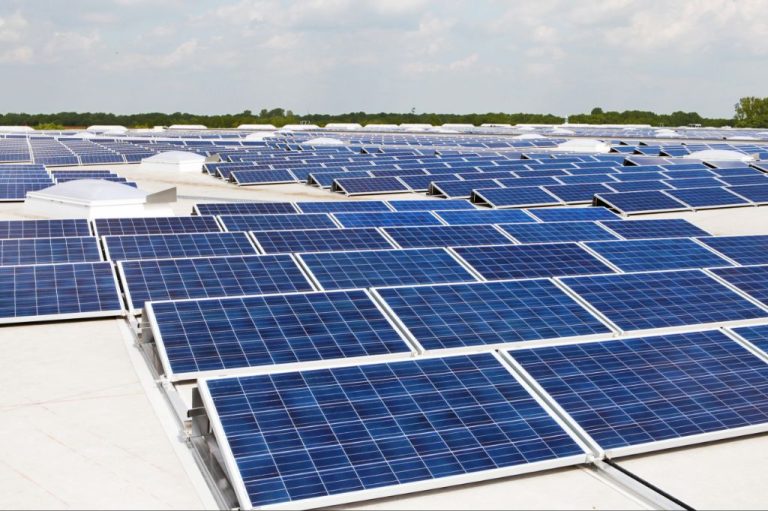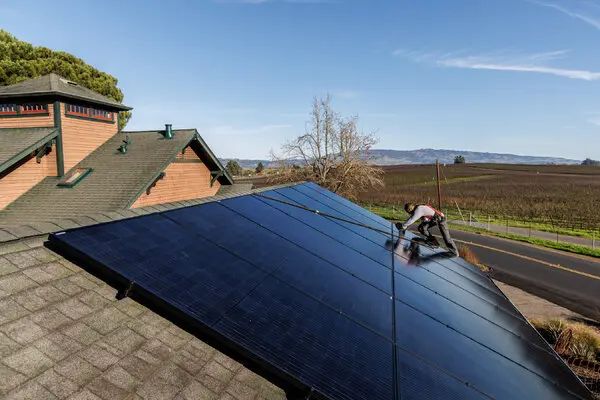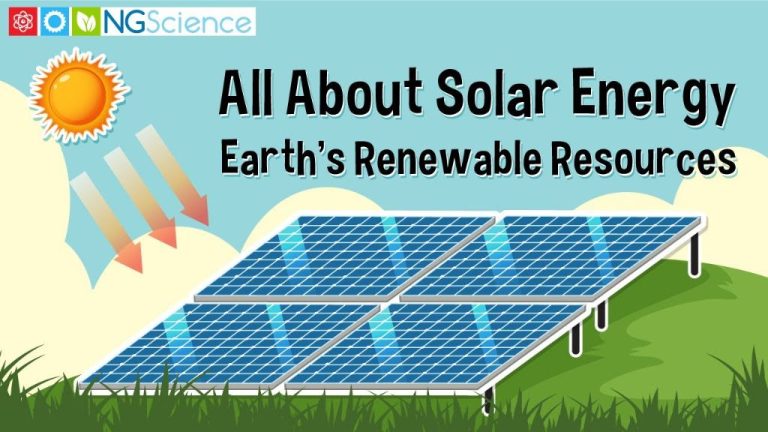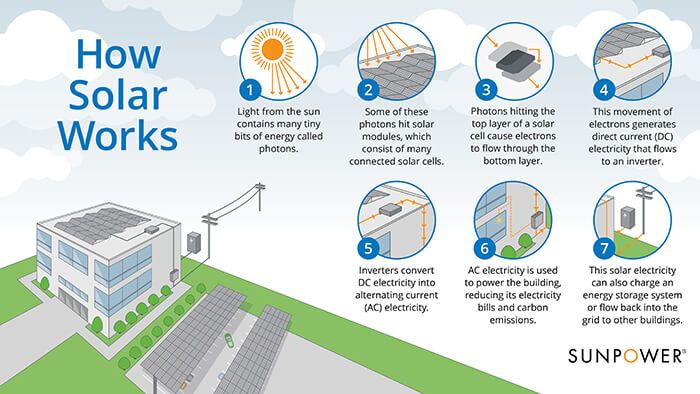Is There A Future For Solar Energy?
Solar energy has emerged as a promising renewable energy source that has the potential to help mitigate climate change and reduce dependence on fossil fuels. However, questions remain about the viability and future of solar technology. This article examines the key question: is there a future for solar energy? By reviewing the history, costs, benefits, advancements, and projections for solar adoption, we will analyze the potential for solar to play a major role in the global energy mix going forward.
History of Solar Energy
Solar energy has been harnessed for human use since ancient times. As early as the 7th century BC, people used magnifying glass to concentrate the sun’s rays to make fire [1]. Ancient Greek and Roman civilizations employed mirrors to harness solar energy for lighting torches in religious ceremonies [1].
In 1839, Alexandre Edmond Becquerel discovered the photovoltaic effect while experimenting with metal electrodes in electrolyte solutions [2]. This marked a major milestone in understanding how solar cells work. The first solar cell made of selenium was built in 1883 by Charles Fritts [2].
Today, solar energy provides only about 1.5% of total U.S. energy consumption. However, solar deployment has grown over 40% per year on average in the last decade [3]. With continuing advancements in solar technology and policy support, solar energy is poised to become a major player in the global renewable energy landscape.
Benefits of Solar Energy
Some of the key benefits of solar energy include:
Solar is a clean and renewable energy source. Unlike fossil fuels, it does not emit greenhouse gases or toxic pollutants. Converting to solar energy can significantly reduce a home or business’s carbon footprint.
Relying more on solar energy reduces dependence on finite fossil fuel reserves. Solar can help meet energy needs more sustainably over the long-term. According to the U.S. Department of Energy, the amount of sunlight that hits Earth’s surface in just one hour could meet the world’s energy demands for an entire year (1).
Solar technology can be implemented on both small and large scales. Individual homeowners can install rooftop solar panels, while large solar farms can provide electricity to entire communities (2). This scalability and flexibility is a major benefit.
Once installed, solar panels have very low maintenance costs. They do not require fuel to operate, unlike gas, oil, or coal plants. The initial installation cost pays off over time with virtually free ongoing energy generation (3).
(1) https://www.energy.gov/energysaver/articles/5-benefits-residential-solar
(2) https://www.energy.gov/energysaver/benefits-residential-solar-electricity
(3) https://www.enelgreenpower.com/learning-hub/renewable-energies/solar-energy/advantages-solar-energy
Costs and Challenges
Solar panels and systems are expensive to manufacture and install. Although costs have dropped significantly in recent years, the upfront cost of a residential solar system averages around $18,000 in the U.S., which is a major barrier for many homeowners (The Dark Side of Solar Power).
Solar energy depends on consistent sunlight to operate effectively, but the amount of sunlight that reaches the Earth’s surface varies depending on location, time of day, season, and weather conditions. Solar output can drop drastically on cloudy days or at night, so energy storage systems or supplemental power sources are often needed to provide reliable electricity around the clock (Advantages & Disadvantages of Solar Energy).
The amount of sunlight that reaches the Earth varies geographically, with some northern regions receiving far less solar radiation. Areas like the Pacific Northwest get about 75% less sunlight than the Southwest U.S. deserts, making solar less effective in those locations (The Dark Side of Solar Power).
While solar panels themselves are benign, the manufacturing process for photovoltaic cells often relies on toxic materials like hydrochloric acid, sulfuric acid, nitric acid, hydrogen fluoride, 1,1,1-trichloroethane, and acetone. Improper disposal of damaged solar panels could leach those chemicals into the environment (The Advantages and Disadvantages of Solar Energy).
Solar Technology Advancements
Solar technology has advanced significantly in recent years with new innovations focused on improving panel efficiency, storage, flexibility, and large-scale deployments.
One major advancement is the development of tandem or multi-junction solar cells that contain multiple layers to absorb different wavelengths of sunlight. Perovskite-silicon tandem solar cells, which combine silicon with a thin perovskite top layer, have reached efficiency levels above 25%, significantly higher than traditional silicon panels (Oxford PV’s innovative perovskite-on-silicon tandem solar cell which promises to revolutionise solar, https://www.nature.com/articles/d41586-023-03714-y).
Better storage solutions like improved lithium-ion batteries and pumped hydro allow solar power to be used 24/7, overcoming intermittency issues. Startups are also developing more flexible panels that can be integrated into building materials, vehicles, drones, and devices.
Floating solar farms placed on reservoirs are an innovative approach to large-scale solar deployment while utilizing water surfaces. India and China have been leading the development of floating solar farms. This allows solar to be sited on bodies of water where land is scarce (Solar panel technology is set to be turbo-charged – but first we need to test how robust they are, https://www.csiro.au/en/news/all/articles/2023/september/solar-panel-technology).
Government Policy
The growth of solar energy in the U.S. has largely been driven by government policies and incentives at the federal, state and local levels.
One of the key incentives is the federal investment tax credit (ITC). The ITC provides a tax credit for 26% of the cost of installing a residential or commercial solar energy system. This credit is scheduled to phase down to 22% for projects that start construction in 2023, and then to 10% for commercial projects and 0% for residential projects after 2023 (SEIA).
State-level renewable portfolio standards (RPS) have also significantly contributed to solar growth by requiring utilities to increase their portfolio share of renewable energy. As of 2019, 29 states plus Washington, D.C. had adopted RPS policies (EPA). Many states also have specific solar policies as part of their RPS.
Net metering policies, which allow solar customers to receive credit for excess electricity sent back to the grid, have enabled the expansion of rooftop solar. Net metering is mandatory in many states but is also frequently debated, with some states changing policies to reduce credits (Third Way).
Public Opinion
Public opinion polls show growing support for renewable energy, especially solar power. A 2016 Pew Research Center survey found 89% of Americans favor more solar panel farms, while just 9% oppose them. More recently, a 2022 Pew survey showed 72% of Americans believe the federal government should encourage solar and wind power production.
Despite this broad support, some concerns remain around the aesthetics and land use of large-scale solar installations. A 2023 Reuters/Ipsos survey found 68% globally support solar power, but communities may still oppose local projects that impact views or open space. Overall, polls demonstrate most people favor continued growth of solar energy if it can be done responsibly.
Business Adoption
Many corporations are increasingly installing solar power to meet their sustainability goals and take advantage of declining costs that make it more financially appealing.[1] Through June 2022, U.S. businesses have installed nearly 19 gigawatts (GW) of on-site and off-site solar capacity, double the 9.4 GW capacity 5 years earlier.[1] Declining solar costs, federal tax incentives, and more options to purchase off-site solar have accelerated solar adoption.[2] Corporations view solar investments as providing a strong, predictable return on investment competitive with other capital expenditures.[2] For example, Meta installed over 6 GW of new solar projects in 2021, while firms like Amazon, Apple, Walmart, Microsoft, and Target were also top adopters.[3]
Projected Growth
According to the International Energy Agency (IEA), global solar PV generation increased by over 26% in 2022 to reach 1,300 TWh. The IEA is projecting continued strong growth in solar capacity over the coming decades.
The US Energy Information Administration (EIA) is forecasting that solar capacity will grow from 90 GW in 2020 to 338 GW in 2050 in its reference case. However, under the EIA’s high solar cost case, capacity only grows to 203 GW by 2050. The wide range in EIA’s solar projections highlights the uncertainties around growth.
Key markets like China, India, Europe and the United States are expected to see substantial increases in solar capacity. Wood Mackenzie is predicting annual global solar installations will reach 208 GW by 2025, with China and India representing half of the global demand.
Conclusion
In summary, solar energy has come a long way in recent decades and has significant potential for the future. Key points discussed include:
- Solar technology has improved dramatically, with solar panels becoming much more efficient and affordable.
- The costs of solar have dropped substantially, making it cost competitive with fossil fuels in many regions.
- Solar energy offers environmental benefits by producing clean, renewable power without greenhouse gas emissions.
- Solar adoption continues to grow rapidly as costs fall and technologies improve.
- Supportive government policies like tax credits and net metering have accelerated solar growth.
The outlook for solar energy remains very positive. With further technological advances and economies of scale, costs are projected to continue declining. Solar energy has the potential to generate a substantial portion of the world’s electricity within the next few decades. Realizing this potential will require sustained policy support and infrastructure investment. But the progress of solar energy to date demonstrates that a transition to solar power on a global scale is achievable and would significantly benefit the environment.





